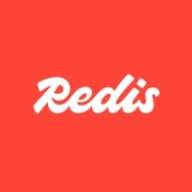

Find out in this report how the two Database as a Service (DBaaS) solutions compare in terms of features, pricing, service and support, easy of deployment, and ROI.
I would rate the support from AWS very high, maybe nine, but it also depends on what kind of support you have signed in your contract, whether the premium support or the standard support.
The documentation is quite good.
The official AWS technical support for Amazon RDS is helpful, providing 24/7 assistance for all business support cases with tools such as the health dashboard and AWS trusted advisor.
Its automated scaling, both in storage and instances, is vital as it eliminates manual interventions.
The installation of Amazon RDS is quite easy and quite scalable.
Despite being a strong feature, scalability could be improved due to the lack of full functionality in autoscaling.
Data migration and changes to application-side configurations are challenging due to the lack of automatic migration tools in a non-clustered legacy system.
Amazon RDS is very stable when deployed correctly across different zones with the right configurations.
It is a stable product overall, with very few issues.
Amazon RDS is quite stable, and the SLAs are sort of 99.98%.
Redis is fairly stable.
Right now, Amazon RDS supports MySQL and PostgreSQL, but there are certain other RDS engines that it cannot support yet.
Having native Change Data Capture (CDC) support would be beneficial, allowing for seamless integration with Kafka without relying on external technologies like Debezium.
Simplifying migration for those transitioning from on-premises to cloud environments.
Data persistence and recovery face issues with compatibility across major versions, making upgrades possible but downgrades not active.
While Azure provides great services, long-term plans on AWS are 20% to 30% cheaper.
I find the pricing of Amazon RDS fair, as AWS operates on a pay-for-what-you-use model.
I rate the price for Amazon as eight on a scale from one to ten.
Since we use an open-source version of Redis, we do not experience any setup costs or licensing expenses.
Database management is effective in Amazon RDS because it offers automated backups, high availability, read replicas, and support from multiple database engineers, while also providing security, monitoring and metrics, scalability.
High availability is a basic fundamental architecture requirement. Multi-AZ automatically complies with that requirement, so that is a very helpful and useful feature.
In some cases, we are using the read replica feature, and it does improve our application performance because we do not allow any downstream system to come to the main storage or main databases and perform a query.
It functions similarly to a foundational building block in a larger system, enabling native integration and high functionality in core data processes.
| Product | Market Share (%) |
|---|---|
| Amazon RDS | 14.8% |
| MongoDB Atlas | 12.7% |
| Microsoft Azure SQL Database | 11.3% |
| Other | 61.2% |
| Product | Market Share (%) |
|---|---|
| Redis | 23.1% |
| Amazon ElastiCache | 18.6% |
| Google Cloud Memorystore | 14.5% |
| Other | 43.8% |
| Company Size | Count |
|---|---|
| Small Business | 22 |
| Midsize Enterprise | 15 |
| Large Enterprise | 23 |
| Company Size | Count |
|---|---|
| Small Business | 11 |
| Midsize Enterprise | 3 |
| Large Enterprise | 8 |
Amazon Relational Database Service (Amazon RDS) is a web service that makes it easier to set up, operate, and scale a relational database in the cloud. It provides cost-efficient, resizeable capacity for an industry-standard relational database and manages common database administration tasks.
Redis offers high-speed, in-memory storage, renowned for real-time performance. It supports quick data retrieval and is used commonly in applications like analytics and gaming.
Renowned for real-time performance, Redis delivers high-speed in-memory storage, making it a favorite for applications needing quick data retrieval. Its diverse data structures and caching capabilities support a broad array of use cases, including analytics and gaming. Redis ensures robust scalability with master-slave replication and clustering, while its publish/subscribe pattern renders it reliable for event-driven applications. The solution integrates smoothly with existing systems, minimizing performance tuning needs. Although documentation on scalability and security could be improved, Redis remains cost-effective and stable, commonly utilized in cloud environments. Enhancing integration with cloud services like AWS and Google Cloud and refining GUI may improve usability.
What are the key features of Redis?Redis finds application across industries for tasks like caching to improve application performance and speed, minimizing database load. It enables real-time processing for session storage, push notifications, and analytics. As a messaging platform, Redis handles high traffic and supports replication and clustering for cross-platform scalability.
We monitor all Database as a Service (DBaaS) reviews to prevent fraudulent reviews and keep review quality high. We do not post reviews by company employees or direct competitors. We validate each review for authenticity via cross-reference with LinkedIn, and personal follow-up with the reviewer when necessary.